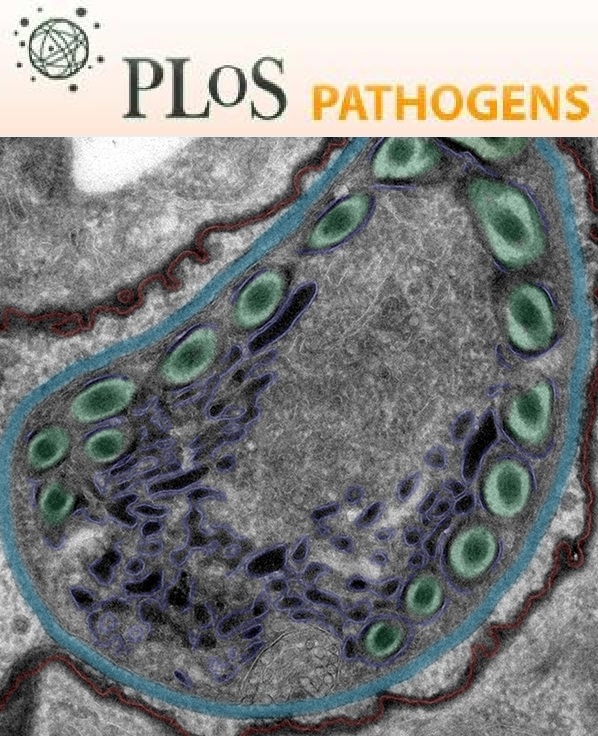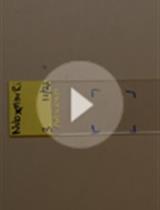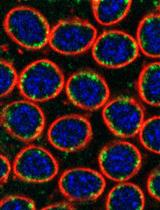- EN - English
- CN - 中文
Fluorescence in situ Hybridization to the Polytene Chromosomes of Anopheles Mosquitoes
疟蚊多线染色体的荧光原位杂交
发布: 2013年08月20日第3卷第16期 DOI: 10.21769/BioProtoc.860 浏览次数: 13475
评审: Fanglian HeYoko EguchiLin Fang
Abstract
Fluorescence in situ hybridization (FISH) is a method that uses a fluorescently labeled DNA probe for mapping the position of a genetic element on chromosomes. A DNA probe is prepared by incorporating Cy-3 or Cy-5 labeled nucleotides into DNA by nick-translation or a random primed labeling method. This protocol was used to map genes (Sharakhova et al., 2010) and microsatellite markers (Kamali et al., 2011; Peery et al., 2011) on polytene chromosomes from ovarian nurse cells and salivary glands of malaria mosquitoes. Detailed physical genome mapping performed on polytene chromosomes has the potential to link DNA sequences to specific chromosomal structures such as heterochromatin (Sharakhova et al., 2010). This method also allows comparative cytogenetic studies (Sharakhova et al., 2011; Xia et al., 2010), and reconstruction of species phylogenies (Kamali et al., 2012).
Keywords: Mosquito (蚊子)Materials and Reagents
- Early fourth instar Anopheles larvae
- Female Anopheles mosquitoes
- Template DNA
- Fisherfinest* Premium Extra-Thick Frosted Microscope Slides (Double frosted coating) (Thermo Fisher Scientific, catalog number: 12-544-6 )
- Fisherfinest* Premium Cover Glasses (22 x 22 mm) (Thermo Fisher Scientific, catalog number: 12-544-10 )
- 50% Propionic acid in water
- Razor blade
- Liquid nitrogen
- Ethanol, molecular biology grade
- Microscope slide staining jar with lid
- Random Primed DNA Labeling Kit (Roche Applied Science, catalog number: 11004760001 )
- Random Primers DNA Labeling System (Life Technologies, InvitrogenTM, catalog number: 18187-013 )
- Formamide (Super pure) (Fisher Bioreagent, catalog number: BP228-100 )
- Dextran Sulfate Sodium salt from Leuconostoc spp. (Sigma-Aldrich, catalog number: D8906 )
- Prolong® Gold antifade reagent (Life Technologies, InvitrogenTM, catalog number: P36930 )
- Cy3-dUTP (GE Healthcare, catalog number: PA53022 )
- Cy5-dUTP (GE Healthcare, catalog number: PA55022 )
- YOYO®-1 Iodide (491/509)–1 mM Solution in DMSO (Life Technologies, InvitrogenTM, catalog number: Y3601 )
- Paraformaldehyde (Sigma-Aldrich, catalog number: F8775 )
- DNA polymerase I (Fermentas, catalog number: EP0041 )
- DNase I (Fermentas, catalog number: EN0521 )
- QIAquick® Gel Extraction Kit (QIAGEN, catalog number: 28704 )
- QIAquick® PCR purification Kit (QIAGEN, catalog number: 28104 )
- Carnoy's solution (see Recipes)
- 20x SSC (see Recipes)
- 3 M NaAC (see Recipes)
- 1x PBS (see Recipes)
- Hybridization buffer (see Recipes)
Equipment
- 1.5 ml microcentrifuge tubes
- Forceps
- Disposable transfer pipette
- Dissecting needles
- Research stereo microscope (Leica, model: VA-OM-E194-354 )
- Phase contrast compound microscope with 10x, 20x, 40x and 100x objective lenses
- Thermal cycler
- Vacufuge® vacuum concentrator (Eppendorf, model: 022820001 )
- Incubator
- Water Bath
- Vortexer
- Confocal Microscope or Fluorescence Microscope
Procedure
文章信息
版权信息
© 2013 The Authors; exclusive licensee Bio-protocol LLC.
如何引用
Readers should cite both the Bio-protocol article and the original research article where this protocol was used:
- Xia, A., Peery, A., Kamali, M., Liang, J., Sharakhova, M. V. and Sharakhov, I. V. (2013). Fluorescence in situ Hybridization to the Polytene Chromosomes of Anopheles Mosquitoes. Bio-protocol 3(16): e860. DOI: 10.21769/BioProtoc.860.
- Kamali, M., Xia, A., Tu, Z. and Sharakhov, I. V. (2012). A new chromosomal phylogeny supports the repeated origin of vectorial capacity in malaria mosquitoes of the Anopheles gambiae complex. PLoS Pathog 8(10): e1002960.
分类
细胞生物学 > 细胞结构 > 染色体
细胞生物学 > 细胞成像 > 荧光
您对这篇实验方法有问题吗?
在此处发布您的问题,我们将邀请本文作者来回答。同时,我们会将您的问题发布到Bio-protocol Exchange,以便寻求社区成员的帮助。
Share
Bluesky
X
Copy link












